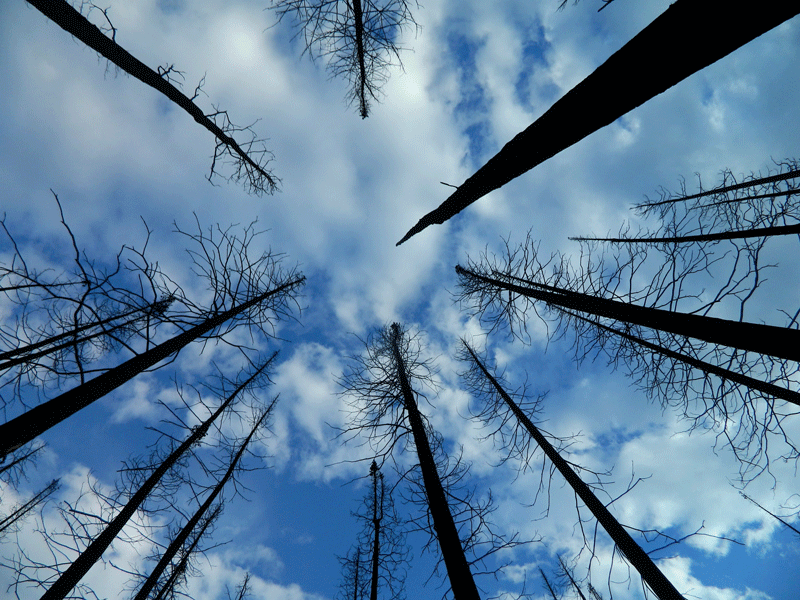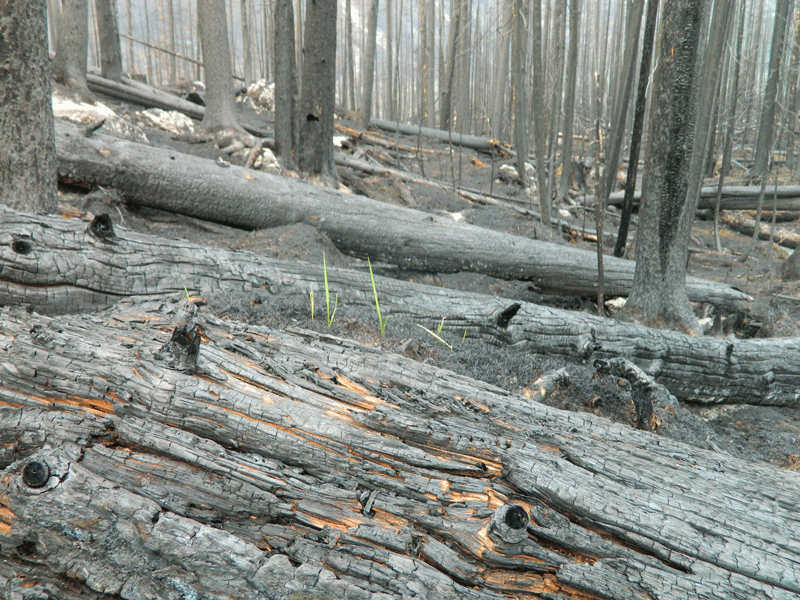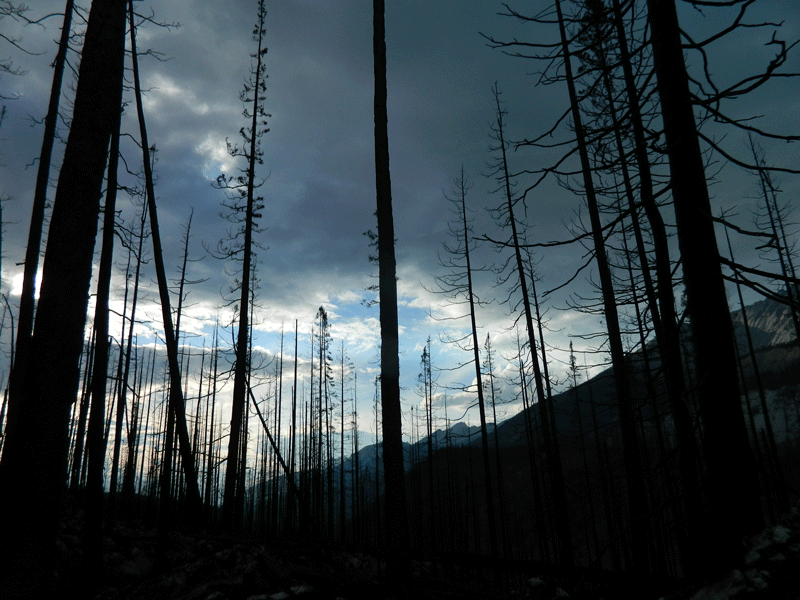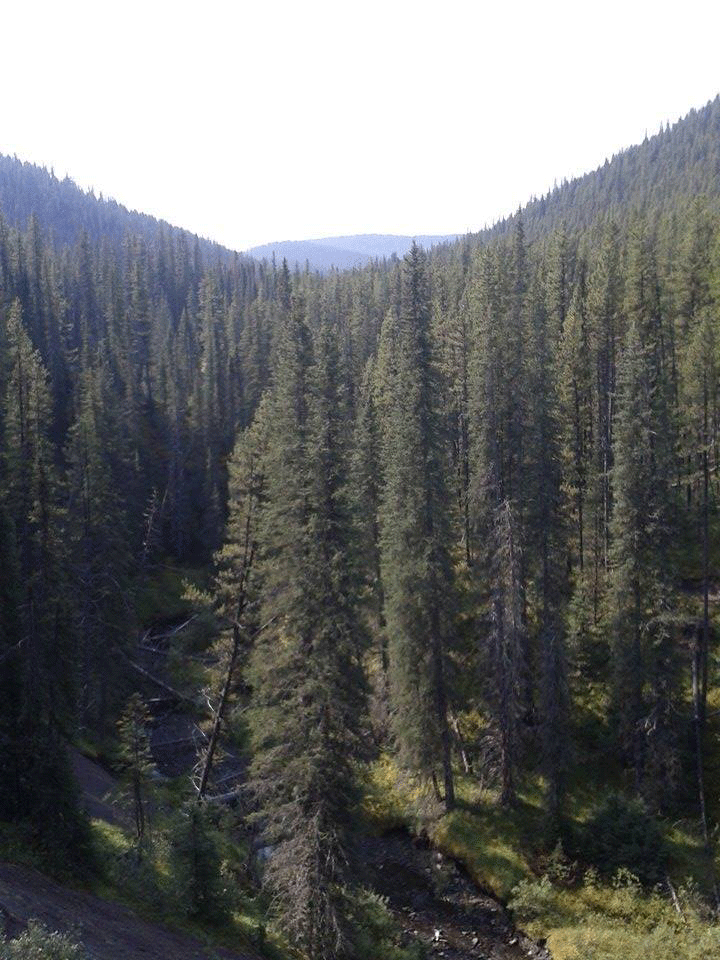Forest of Learning
September 11, 2015 9:23 am Leave your thoughts
In the last couple of weeks here at West Fraser I have gotten the chance to try out some new tasks that have given me some insight into other aspects of forestry. Recently, I was fortunate to join new hire Chris and wily veteran Morris, members of the planning forester team in Hinton to learn about block layout. As a part of the spatial harvest sequence, which is planned over a 20 year cycle, stands that are suitable for harvest are identified and roughly outlined using a GIS application. Next, one of the planners will head out to the site to complete block layout for the stand, walking through the area with a GPS and establishing the boundaries with flagging tape. When you are doing block layout, there are a lot of things to consider- access for harvesting equipment, water crossings, wildlife habitat, wood quality and quantity, and silvicultural activities. Learning from someone with as much experience as Morris was a pleasure, and we got to see some really nice country in the foothills north of Nordegg. It was a nice change from my usual work and something I hope to do more of in the future.

As we were driving back to Hinton, I noticed a plume of smoke across the valley that I had never seen before. Naturally curious, we drove down a compartment road to a ridge overlooking the valley and sure enough, we had front row seats to an active forest fire! Located about 10 km from our location, the flames were climbing up a few of the trees, creating a thick column of smoke. Knowing that we were required to report all wildfires, we called the Edson Wildfire Management dispatch and soon realized that there were two helicopters working on another blaze a few kilometres distant. Edson dispatch was aware of the fire, and it was taken care of in short order.

Many people focus on the negative effects of forest fires, specifically the jepordization of property, safety and aesthetic values on the land base and many lose sight of just how important fire is on the landscape. A few weeks ago, I was fortunate to check out the burn area left from the Excelsior wildfire in Jasper National Park. This fire burned with high intensity, and the charred landscape it left behind is stark and unfamiliar. It was very odd to see a creek flowing through the burned area, and the first signs of life, a few pioneering blades of grass, sprouting from the month-old ashes. I remember learning in school that fire helps to clear out old trees and competing vegetation on the forest floor, exposing mineral soil, which is a prime seed bed for coniferous species. In addition, many coniferous species in Canada’s northern forests are at least in part serotinous, which means their cones are bound by a resin that only opens during very hot conditions such as fire. The charred landscape decreases the albedo of the soil, allowing it to absorb more heat, which in turn increases microbial activity, sending a shot of nutrients back into the soil that the new plants can use to establish themselves. Therefore, like many things, forest fires have their pros and cons, and play a vital role in renewing forest ecosystems.

In addition, many Canadians in the forest industry are all too familiar with the recent Mountain Pine Beetle outbreaks in British Columbia. Until recently, Alberta’s forests have been largely exempt from the wrath of the beetle; by the times seem to be changing. Throughout the western portion of the Forest Management Area at the foot of the Rocky Mountains, beetle evidence is becoming more and more frequent. Until recently, the mountains have posed a barrier to beetle migration, but warmer winters and large fronts moving eastward have carried large flights of beetles into West Fraser’s FMA. The beetles usually target mature pine trees, penetrating the bark and working their way through the phloem layer upward in the shape of a J. The female beetles will eventual terminate and lay about 60 eggs, which will hatch into larvae the following spring. The larvae then move horizontally beneath the bark before maturing, and leaving the host tree trough an exit hole. In addition to eating parts of the phloem layer, the beetles carry with them a whole host of nasty critters including the blue stain fungus, which permenatley harms the tree’s ability to transport sugars. If the infestation becomes severe enough, and the tree cannot defend itself, it will fall to the Mountain Pine Beetle. There is currently quite a bit of trepidation in the office about this emerging threat to timber security. Harvesting has now shifted focus to target susceptible stands in the hopes of preventing an outbreak similar in scope to those felt in British Columbia.

A lot of the topics that we discussed in class last year have come up over the course of the summer, disturbances in the forest being a major one. One of the aspects of working for West Fraser that I’ve really begun to appreciate is the ability to see some of these concepts first-hand, to experience them in the field. School and the knowledge that you gain form it is very important, but it is also important to ground that knowledge with real experience, actually seeing it with your own eyes. In many ways, this summer job has been comparable to a whole semester of field school!
